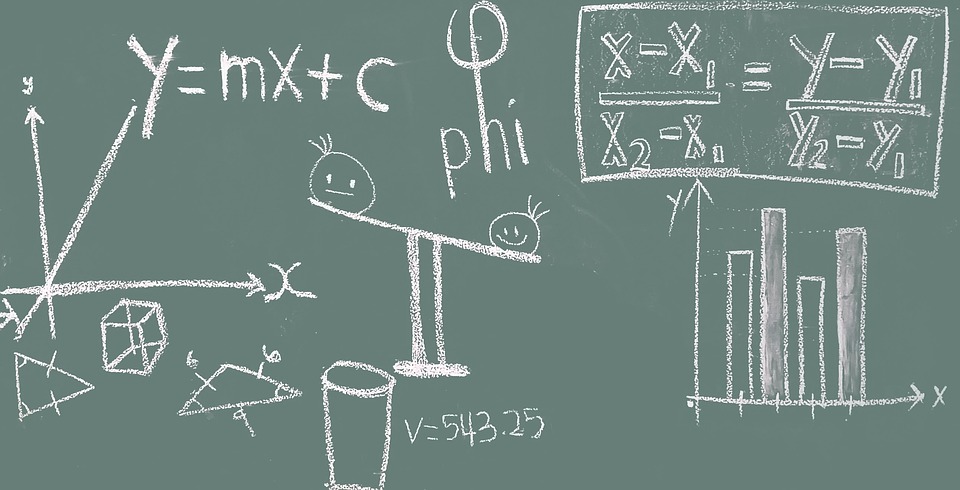The latter years of the 20th century saw the development, in many countries, of universal secondary education. This meant that all students, irrespective of their ability or interest in Mathematics were obliged to continue learning in Mathematics to the end of their high school education.
In the past, students graduating into high school Mathematics classrooms were, for the most part, “Maths-Logical” thinkers. This meant that the “Chalk and talk” and multiple practice exercises approach to pedagogue worked for those students. But, with all students attending high school, their learning styles did not work with this traditional pedagogue. This meant that teaching pedagogues in Mathematics had to change. In addition, there was a need for massive syllabus changes to bring syllabuses in line with modern developments in Mathematics, particularly with the advent of computer technology. To further complicate the issue, if a teacher used a variety of pedagogue, the teacher needed to use an assessment process that reflects that pedagogue.
This meant that my teaching pedagogue had to expand to cater for all my students as well as the requirements of the modern syllabuses in Mathematics.
Below is how I tried to make Mathematics more appealing to my students at the beginning of the 21st century. There are fourteen strategies I used to help students want to be totally involved in the development of their Mathematics.
My student centered strategies were:
1. Mathematics had to be fun, relevant, and life related.
I used such strategies as a fun quiz, real-life questions, easy to difficult challenges, questions in unfamiliar contexts and speed quizzes to name just a few strategies.
2. I try to teach Mathematics the way I would have liked to have been taught, not as I was taught.
Remember how you were often bored in “Maths” classes and you could not see the relevance of Mathematics to your life. Don’t allow your students to feel that way.
3. I used a variety of teaching strategies to fit the topics I was teaching.
Don’t let Mathematics be just “chalk and talk” and practice of multiple exercises. Use technology, cooperative learning techniques, hands-on material, practical lessons, the quiz and any strategies that take into account the different learning styles of your students. Then assess each topic in a way that reflects your teaching approach.
4. I often used my students as assistant teachers.
I often used my more able students as mentors in their areas of expertise. I may need to give them some tutor training but I found that the other students react well to their help and progress faster. What is important about the mentor’s words is that it is in the language of the student. This enables the less able student to understand more quickly.
5. I set out to develop every skill I could in all my students, irrespective of their Mathematics talent.
The greater the range of skills I could teach my students, the greater was their chance of success in the long term. These skills might include estimation, planning, how to check effectively as well as how best to set out the solution to a problem.
6. I worked hard to help students develop their own understanding of Mathematics, not to just adopt my understanding.
In other words, I introduced the ideal of ‘Constructivism’ into my teaching.
My teacher centered strategies were:
7. I taught Mathematics through Stealth.
The quiz is an example of a way to create learning by stealth. It seems to be more like fun than learning Mathematics for many students.
8. Teaching Mathematics should be challenging, exciting and fun to you, the teacher. It was to me.
I looked for real life examples to use in my teaching and assessment. I included short problem solving/critical thinking exercises in every lesson. These do not need to be difficult every time. For difficult examples, I would give the students clues slowly.
9. I would experiment with new teaching approaches, and then evaluate their success, review the approach, plan a new version and try again.
I introduce new teaching strategies into my program and perfected them with a review process. These different strategies catered for the students’ different learning styles. As well, they added new and interesting teaching challenges for me, as the teacher.
10. Working with lower and middle school classes allowed me the flexibility to experiment with new teaching approaches and assessment that I could use.
This is because the results of assessment in these years are used to rate students internally rather than externally. If a new type of assessment task didn’t work the first time, then I changed it and tried the assessment task again. The original task may well have produced a great learning experience instead of a valid assessment task for your students.
11. I shared my successes and disasters with your colleagues.
This process became an informal professional development for me and my colleagues. Sometimes a more experienced colleague would show me where I went wrong and how I might overcome the disaster in the future.
12. I would model aloud to my classes what I was actually thinking about a problem as I produced a solution to the problem on the whiteboard.
Sometimes I would follow through with an approach that I knew would fail. I didn’t call that a failure but a learning experience for my students. Being a “perfect” solver of problems often disheartens students who believe they can’t match what you do. More often, I included, in my modeling, any ideas that come into my mind that I rejected. I explained why I rejected those ideas. I would model as many different solutions or approaches as time permitted. If a student came up with a different but mathematically correct solution, I would have them convey it to the class.
13. I challenged myself to help students want to come to Mathematics lessons.
I tried to create a personal mindset that helps me develop lessons that I enjoy providing for my students. This meant that I would want to be there, too.
14. I incorporated the use of graphics calculators and computer software as often as possible.
Students, today, are computer users. They relate well to technology. The beauty of technology is that the teacher can demonstrate visually many examples of what is under discussion using computer software or the graphics calculator applications projected on a screen. Understanding comes more quickly than the pen on paper strategies of the past.



